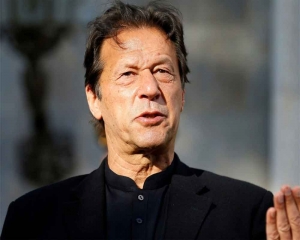As India enters the budget season amid widespread data and economic debates, I would like to present a thought based article on Transmogrifying Economic strategy. In the intricate ecosystem of global economics, India stands at a pivotal juncture, poised for transformative growth. The conventional narrative often views economic challenges as impediments. This article focuses on a new paradigm of Transmogrifying Economic Strategy which sees voids not as obstacles but as opportunities for strategic metamorphosis.
In this exploration, the article delves into the principles of Transmogrifying Economic Strategy, backed by concrete examples, to outline a visionary strategy that could propel India into the echelons of an economic superpower within the next decade. Understanding Transmogrifying Economic Strategy: At the heart of Transmogrifying Economic Strategy lies the concept of dynamic transformation—a continuous process of adaptation and innovation. This approach sees economic challenges not as static problems to be solved but as dynamic voids waiting to be strategically navigated. The term “void” is used to represent existing gaps, challenges, or deficiencies within various aspects of the economy.
These voids can be identified indifferent areas such as education, employment, technology, social schemes etc. The term “transmogrifying” implies a deliberate and holistic change, turning setbacks into catalysts for growth. Let us take example of Phillips Curve and see it through lens of Transmogrifying Economic Strategy: Consider the conventional Phillips Curve—a staple in macroeconomic theory that posits an inverse relationship between inflation and unemployment. Traditionally, policymakers grapple with this curve as a fixed trade-off, but Transmogrifying Economic Strategy views it as a fluid entity responsive to adaptive forces. Traditional View: In the traditional context, policymakers often grapple with a perceived trade-off between inflation and unemployment.
The Phillips Curve, based on historical observations, implies that policymakers face a dilemma. If they aim to reduce inflation, it might come at the cost of higher unemployment, and efforts to lower unemployment might lead to increased inflation. Transmogrifying View: Transmogrifying Economic Strategy challenges the notion of a fixed trade-off and introduces adaptability into the Phillips Curve dynamics. Rather than adhering strictly to historical patterns, it suggests that the relationship between inflation and unemployment can evolve based on proactive economic policies and adaptive strategies. Further,to envision India as an economic superpower within the next decade, a Transmogrifying Economic strategy may be adopted across key dimensions. 1.Dynamic Economic Policies: Transmogrifying Economics advocates for policies that adapt to the evolving economic landscape. India should embrace dynamic tax reforms, trade policies, and regulatory frameworks that anticipate and respond to emerging voids and opportunities.
By adopting this approach, India can turn policy challenges into strategic advantages. Example: Adaptive Tax Policies Imagine a scenario where the Indian government implements adaptive tax policies that respond to technological shifts. During the rise of automation, tax incentives could be directed towards industries that actively invest in reskilling programs, turning the void of displacement into a catalyst for upskilling and innovation. 2.Innovation Ecosystems and Research Hubs:Establishing innovation ecosystems and research hubs is integral to Transmogrifying Economics. These hubs become focal points for collaboration between industries, academia, and startups, ensuring that voids in technology and research transform into centers of excellence. 3.Strategic Investments in Education:Direct investments in education to align curricula with future industry needs.
This involves a paradigm shift toward skill-centric education, preparing the workforce for the demands of emerging industries and reducing voids in skillsets. 4.Reskilling and Workforce Development: Launching of nationwide reskilling initiatives to empower the existing workforce with skills relevant to automation, AI, and other transformative technologies. This ensures that voids created by technological shifts become opportunities for a more skilled and adaptive labor force. (To be continued)
The Author is Senior Policy Consultant and independent researcher. He is an alumnus of London School of Economics, Lee Kuan Yew School of Public Policy and Indian Institute of Management.

























